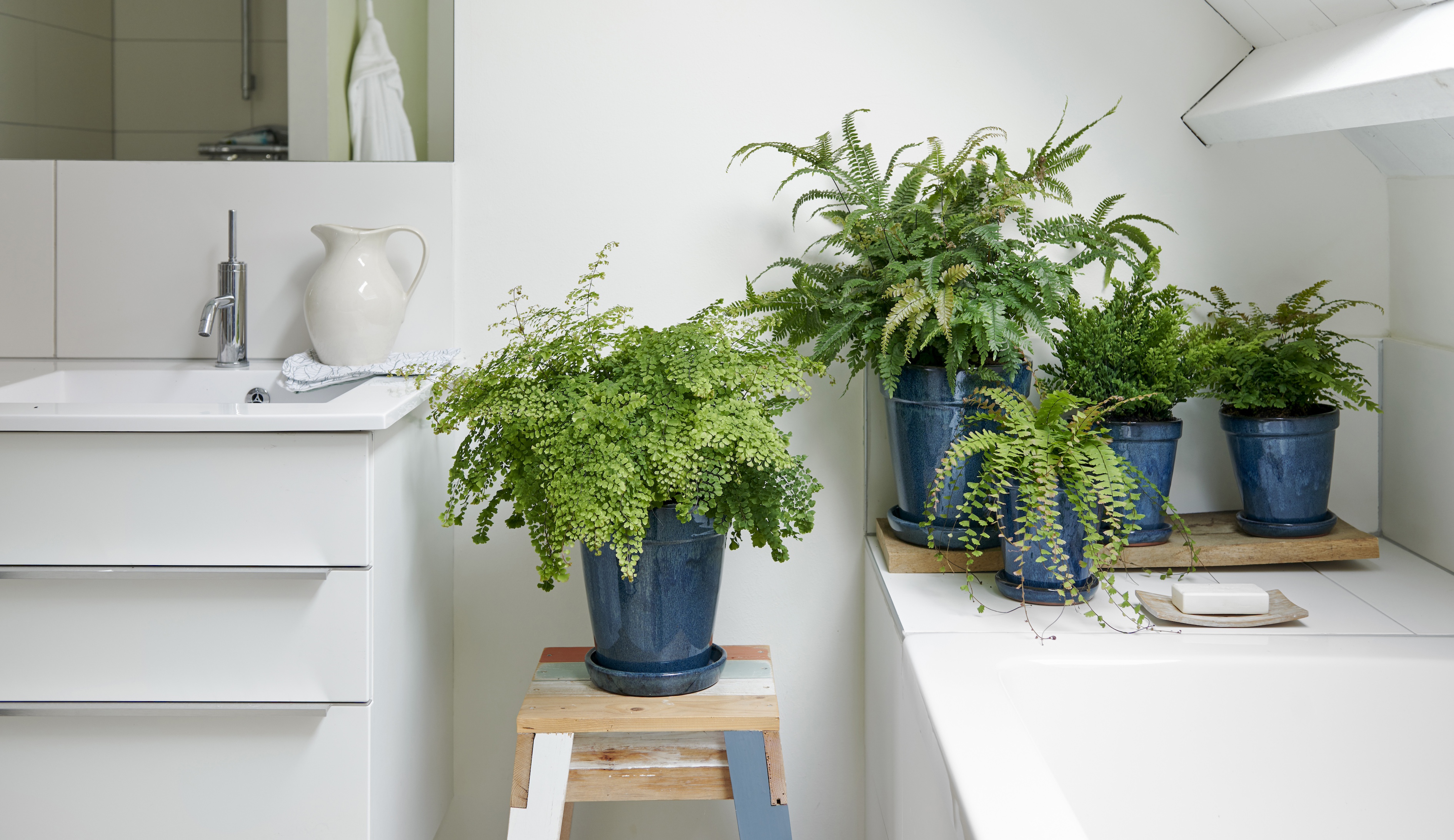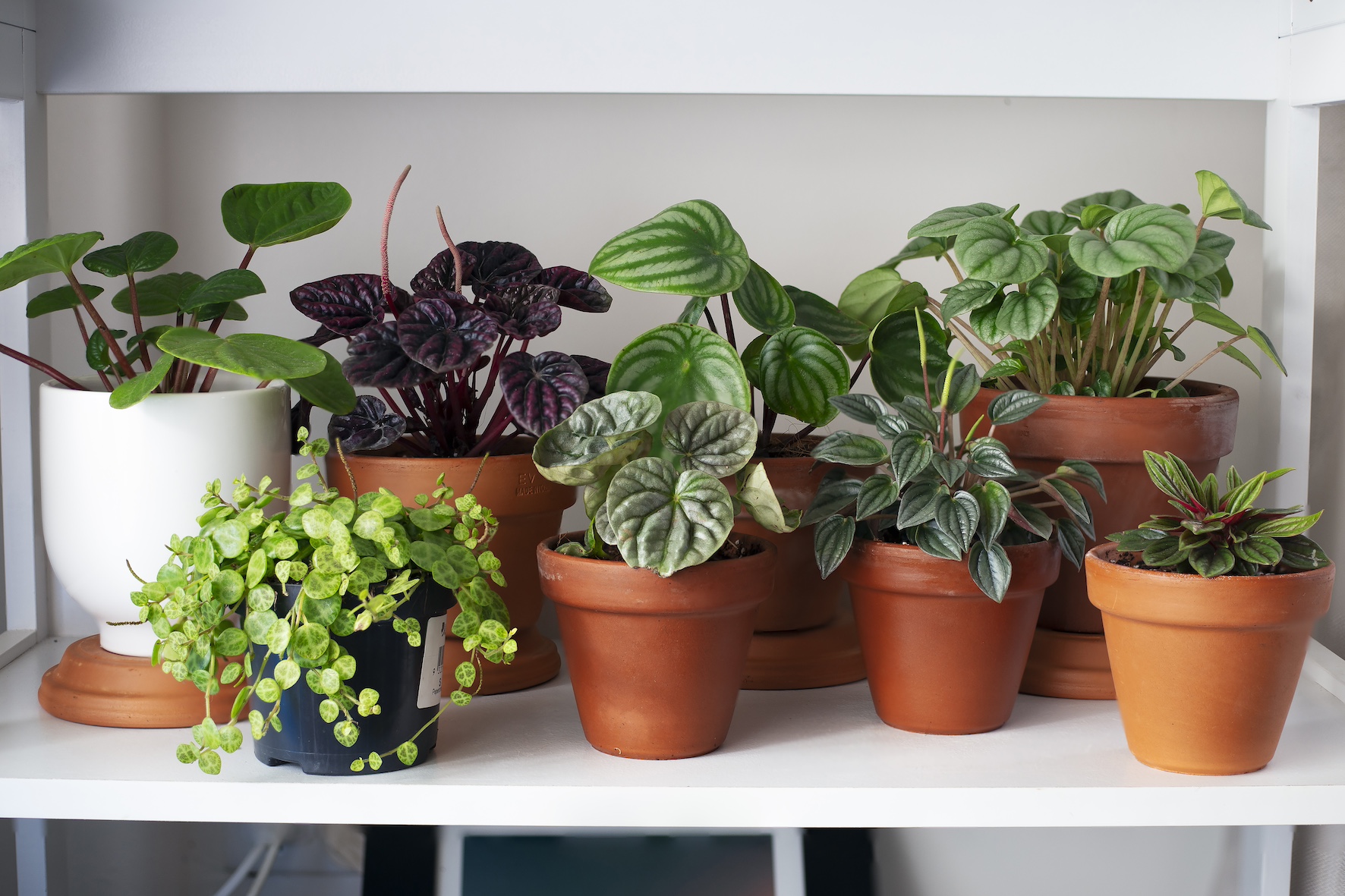
Figuring out how regularly you need to water houseplants is not an exact science, which is why it's so easy to get it wrong.
The good news — there are some guidelines, which can help us gauge the frequency of watering required. Of course, each plant has different requirements, so treating them individually is a first step.
Furthermore, a plant’s watering requirements can change throughout the year and may vary depending on where it is placed. It sounds complicated, but it needn't be.
Once you've grasped the basics outlined by our experts, you'll know when to increase the frequency and when to hold back on the watering.
Should I keep a watering schedule for houseplants?

A schedule can be a good idea, but rather than using that schedule to water houseplants on a weekly basis, use it as a guide to check them regularly instead.
"Every plant you have does not need to be watered with the same amount of water or on the same day," explains Lisa Eldred Steinkopf, author of Houseplants for Beginners. "The key is to check the plant first to see if water is needed.
"Ideally, houseplants need to be checked at least weekly, if not more often. However, instead of watering every Friday, for example, checking your plants on a schedule is best."
How do I check whether a houseplant needs watering?

Firstly, experts advise checking whether the plant's soil is damp. If it is, your plant won't need more water.
“It is a good idea to touch the potting soil,” says William Davidson, author of Dr Houseplant. “Press it gently with the tip of your finger. If it feels damp, it means that the plant does not need watering. Even if it feels dry, do not rush for the watering can immediately; probe just a little deeper, and the potting soil may still be damp underneath although the surface is dry."
If you don't fancy poking your fingers in the plant soil, a moisture metre can also let you know whether a plant is ready for its next watering.
"Sometimes you just want to take the guesswork out of the equation," says Kamili Bell Hill, @plantblerd and author, Happy Plants Happy You. " That’s where a moisture meter come in. This handy gadget will let you know if the soil is still moist deep down in the planter by the roots. But don’t leave it in the plant–get the reading and get it out."
What factors affect how often you need to water houseplants?

The time of year, the temperature and humidity in the room, and the amount of light a plant receives will all affect the frequency of watering it requires. It’s also useful to recognise whether your plant is growing or resting. The growing phase tends to be spring and summer, while the dormant phase is usually fall and winter.
“Learn to look at your plants closely," says William. "When they are growing, they look crisp, strong, and green. While resting, the foliage can temporarily lose its vivid color; the plant may lose a few or all of its leaves and generally look less lush. At this time, it will need much less water than normal.”
1. The season

As outlined already, plants generally need more water when they are actively growing in the spring and summer. However, the season will also affect the conditions, such as temperature and humidity, within our homes.
"Your plants will need to be checked more often in the summer when the air conditioning comes on and in the fall when the heater comes on,” says Lisa. “The air conditioner and furnace both lower the humidity in your home, so until your plants adjust, they may need more water than normal."
William adds, “Water your houseplant more often if the temperature is high or the air humidity is low. Water less often if temperatures are low, the weather is overcast, or the air humidity is high.”
2. Location and light
Light levels in our homes will increase and decrease, depending on the time of year. Whether a plant is by a window or in a shadier part of a room will also affect the amount of light it receives. Plants use both light and water to photosynthesise.
"A plant in bright light in a home kept at 75°F will need more water than a plant in low light and in a lower temperature,” explains Lisa. “A sunny week will have a different effect on how much water is needed compared to a cloudy week.”
3. The type of pot

The type and size of pots your plants are in can also play a part in the frequency of watering they will require.
“Plants need less water if the plant container is made of unglazed clay; the plant is large, but the pot relatively small; or the plant has filled its pot with roots,” says William. “However, if the plant container is plastic or glazed clay; or the plant is relatively small in a large pot, water it less often.”
"'If your plants drink so quickly that you’re watering more than once a week, it may be a sign that your plant needs repotting,' says Richard Cheshire, plant doctor, Patch Plants. "Plant them in a pot around two inches wider so that they have room to spread out and more soil to drink from."
4. Watering techniques

It’s important to note that when plant experts suggest giving houseplants less water, they do not mean the amount of water given to a plant at one time; they mean the frequency. When watering plants it’s better to do so thoroughly and allow them to drain properly.
"If a plant needs water, give it plenty; provide enough to soak through the potting soil and drain through into the drip tray," says William. “The soil all through the pot should be thoroughly wetted at each watering.
"The drip tray should then be emptied an hour or so after watering, by which time the plant will have taken up as much as it needs. With a few exceptions, houseplants prefer to be well watered and then allowed to dry out reasonably before more water is given.”
Popular houseplants and their watering requirements

Different plants have different watering requirements. These are some general guidelines for houseplants that are popular in modern homes.
1. Fiddle Leaf Fig: Weekly watering needed. Allow the soil to completely dry out before you water it again.
2. Tortoiseshell Calathea Medallion: The plant loves moisture so mist it with water every day.
3. Ficus: This plant needs at least 1-1.5 liters of water a week. When pouring water, make sure you pour until you can almost see the water coming out the pot holes.
4. Crassulas: You need to be a little careful with this plant as it stores water in its leaves. Usually, it requires 1 to 2 watering sessions a fortnight.
5. Palms: These need frequent watering, with the soil always being moist. Keep in mind that if its soil is allowed to dry out too much, it can become hydrophobic and repel water.
6. Succulents: There is no hard rule when it comes to watering succulents, as it differs in different climates. Most indoor succulents can be watered every 14-21 days.
7. Spider plants: These generally need to be watered once a week. However, check the soil first to see if it's still moist. If it is, wait for a few more days before you water the plant.
8. Pothos: These need to be watered once every week. Ensure the soil is always moist, but not soggy.
9. Peace lily: These love a generous soak and for the plant to be evenly moist. It's best to water these once a week.
10. Aloe: Usually the plant thrives with once-a-week watering. Keep checking the soil to make sure it is not completely dry.
However, as explained, the seasons, alongside the temperature, humidity and light levels in different locations in the home, will affect how frequently your house plants need watering.







